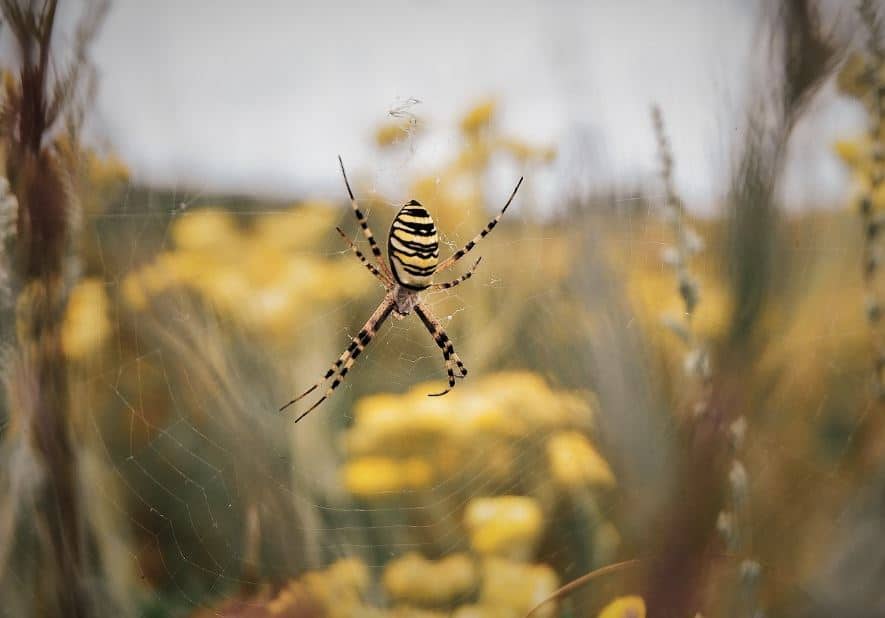Aphids, mosquitoes, gnats, and grasshoppers are just a few of the pests that other insects fight tirelessly to eradicate in gardens, while bees may get all the attention as helpful insects. Garden helpers include garden spiders, which do not represent a hazard to people.
Most people fear spiders because of their eerie look and quick motions, yet this fear is unfounded. Garden spiders either wait patiently for prey or actively look for meals. The most interesting spiders weave webs to capture the exhausted flier. Hence, the next time a spider hides among the plants, just leave it alone and let it do its job.

Good Spiders for Gardens
In our yards, several spider species, sometimes known as arachnids, keep insects and other arthropod invaders away from our plants. Spiders sometimes prey on beneficial insects like bees and tachinid flies. Yet, they are opportunistic hunters that take what they can get. They do not focus on certain pests. Recognize the good spiders that live in gardens.
Due to their camouflage, poisonous garden spiders are seldom observed in our yards. With a few notable exceptions like the black widow and the brown recluse, most spiders possess venom employed to paralyze and kill their victims but are harmless to humans.
Garden Spiders You May See
Three different shapes—orbs, sheets, and cobwebs—are produced by web spinners. The cobweb spider constructs an unruly, sticky web while patiently awaiting its prey. Spiders that weave funnels, like grass spiders, make a flat web with a hole or funnel in the middle where they wait for prey. The spider escapes the funnel as it approaches. Orb weavers wait for a guest while spinning intricate webs with concentric rings.
You will undoubtedly notice if an Argiope orb weaver, a giant black and yellow garden spider, weaves an exquisite web amongst your plants. Because of the zigzag pattern, it spins along the middle of its web. It is also known as a writing spider. When disturbed, it uses its web as a launching pad for a defensive mechanism.
Spiders that hunt do not weave webs but look for prey. Wolf spiders are often seen hopping over lawns or across flowerbeds. Their grey or brown bodies feature white patterns and hairy legs. The woman may be seen carrying the child on her back. Lynx spiders may sit and wait or stalk their victim before they pounce. They have spiky legs.
An ambush hunter calmly awaits an insect’s approach before striking. For instance, crab spiders can move in all three directions and have expanded front legs. Usually, they wait for food by sitting on flowers and hiding among the petals. Jumping spiders are hairy and sometimes iridescent day hunters. They have the finest vision of any spider and can jump 40 times their length.
Avoiding insecticides and utilizing natural mulch on a portion of your garden can help safeguard spiders by giving them a place to store their egg sacs. Fewer pests will infest your plants as a result of your efforts.

